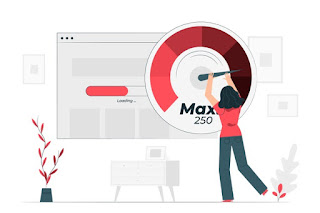How to Speed Up Your Website
How long would you wait for a site to load its webpage? Well, with a statistics of on the brink of 547,200 new websites arising a day, visitors are become more and more impatient. They no longer want to waste even a second expecting an webpage to load.
San Diego Web Marketing – one among the website designing & SEO companies in San Diego CA - relies heavily on website speed improvement tips that we share in this article.
If your website is slow, you lose visitors. People now want things instantly. If they open a website, they want the page to be on their device within seconds.
As a website owner, you need to make browsing your website more pleasing experience. You have to have a website that loads within 1-5 seconds. Unless your website is fast, the user experience is going to suffer and people aren't going to spend time on your sites.
Even Google now uses speed as a ranking factor for search results. If you check the latest recommendations of Web.dev, the Core Web Vitals suggests that the website should load in 3 seconds tops. If not, they must boost the speed of your website.
Here are five tips to optimize website speed.
1) Optimize Images
With improved Internet speeds, websites ignore the importance of using right-sized images. Large images are heavy files and take more time to load. It also puts more strain on your site bandwidth too. In the early days of Internet, people focused more on creating small-sized images that could load fast. You must use web-optimized images even today. If you can, implement responsive images that only load the appropriate size based on the device screen size.
You can also use the latest WebP image format to reduce image size. Most modern browsers support WebP.
2) Remove Inline JavaScript and CSS
Instead of relying on inline Javascript and CSS, use external JS & CSS files to boosts its speed. Using inline CSS is backdated and makes a webpage slow. External JavaScript and CSS files simplify website optimization process.
For non-critical JS, you could also use asynchronous loading.
3) Remove Unused JS & CSS
Believe it or not, most sites have JS & CSS that's never used on the website. It's better to get rid of unused CSS & JS.
4) Minify JS & CSS
Don't use the JS & CSS files in the general form. Instead, minify them to reduce size. Minification is the process of stripping unnecessary parts and comments, unnecessary spaces and formatting are stripped too.
5) Reducing HTTP Requests
If you have too many files loaded with a webpage, it adds to the number of HTTP requests. More HTTP requests means more time to load. Do keep checking the HTTP requests of every webpage of your site and keep performing on them for top speed website.


Comments
Post a Comment